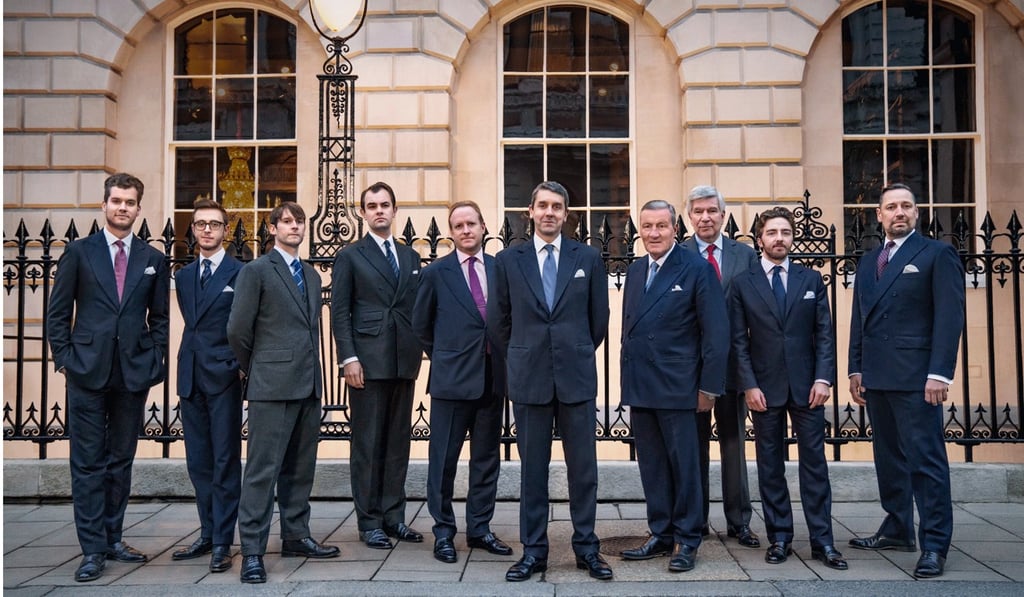How will Savile Row measure up in a fast changing future? More trunk shows in China, e-commerce and youth
- US tariffs, Brexit, the move towards casual wear and cheaper competition in Asia are all putting pressure on Savile Row
- The famous street, which has been in the tailoring business since 1731, is modernising while still relying on its traditional cachet

Keeping up with modern politics is an unenviable task – but it’s one fashion brands are being forced to do daily. The latest sector to get burnt? Savile Row tailors, who have been left reeling in the wake of 25 per cent tariffs on any British wool export to the United States – and who are now looking to Asian suit lovers to pick up some of the slack.
Trump created these tariffs after a dispute over aviation subsidies between the US government and the EU, but British brands feel they have been unfairly targeted – Italian and French tailors haven’t faced similar increases. Add to that the fact that the British fashion industry is still bracing itself for the potential fallout of a no-deal Brexit later this year, and you have a recipe for Savile Row uncertainty.
“Any tariffs and barriers to trade are of course a worry – and highlight that we are dealing with a more isolationist White House,” says Tamara Cincik, the director of British lobbying firm, Fashion Roundtable. “This move signifies that Trump’s government will use trade and tariffs for poker play negotiations on the world stage, which all feels like The Apprentice.”

Unfortunately, for the majority of houses on Savile Row, US clients equate to around 70 per cent of their business. Most brands have their only bricks-and-mortar stores outside London in Manhattan, largely because New York’s banking community can afford a US$40,000 bespoke suit.